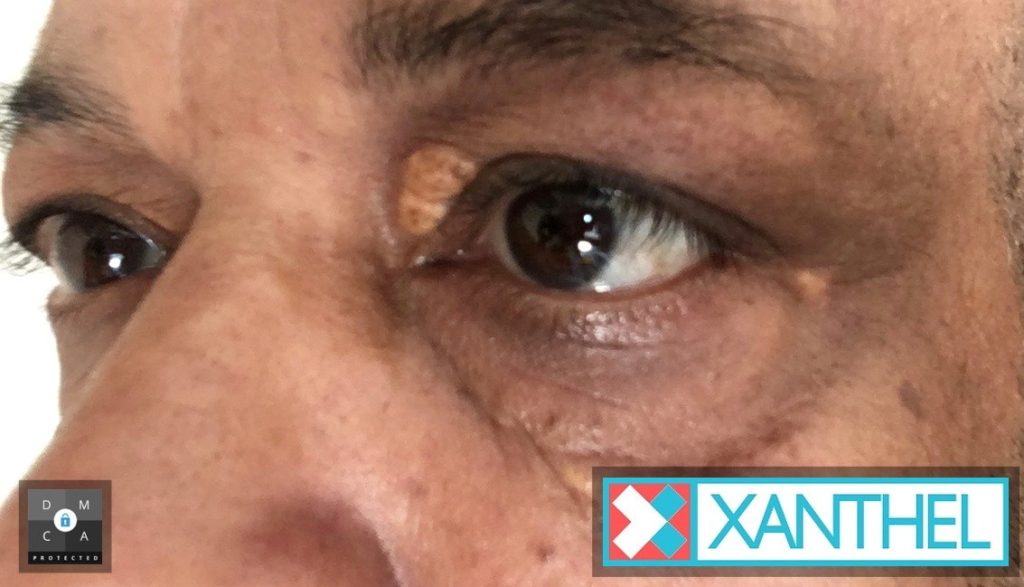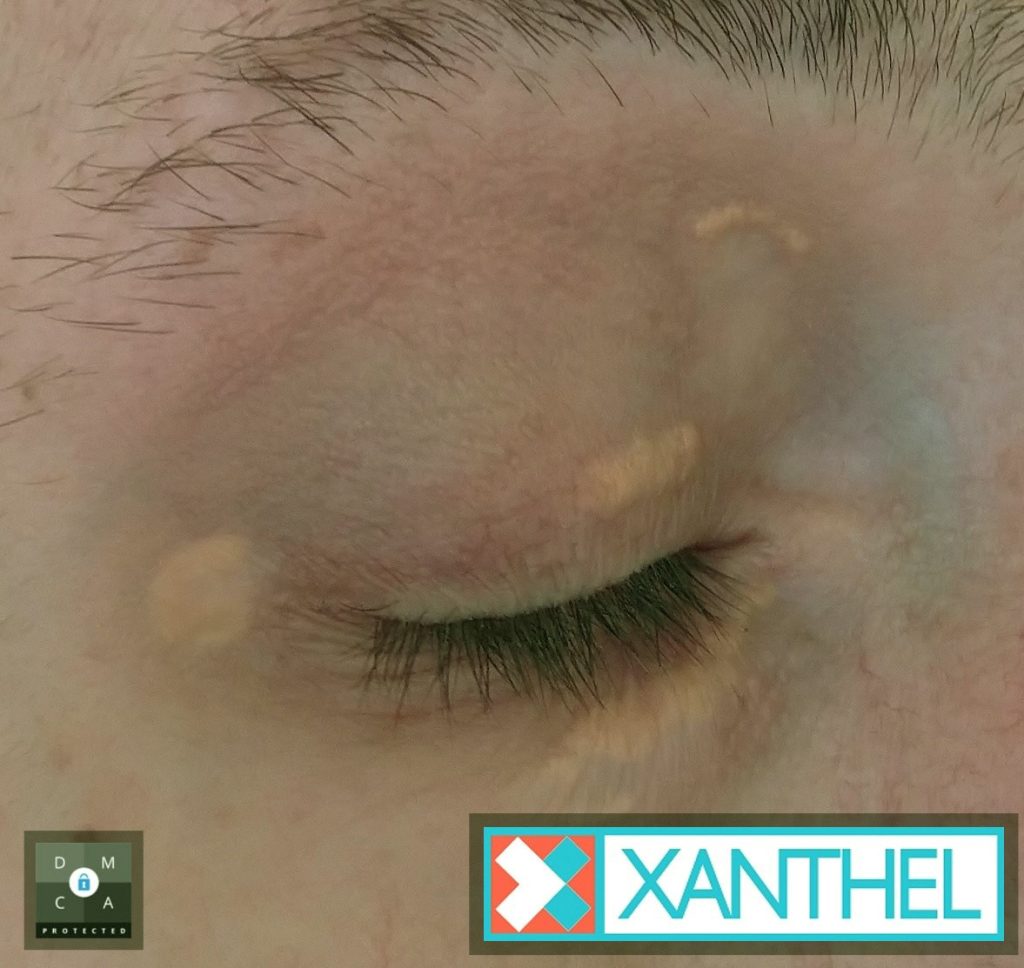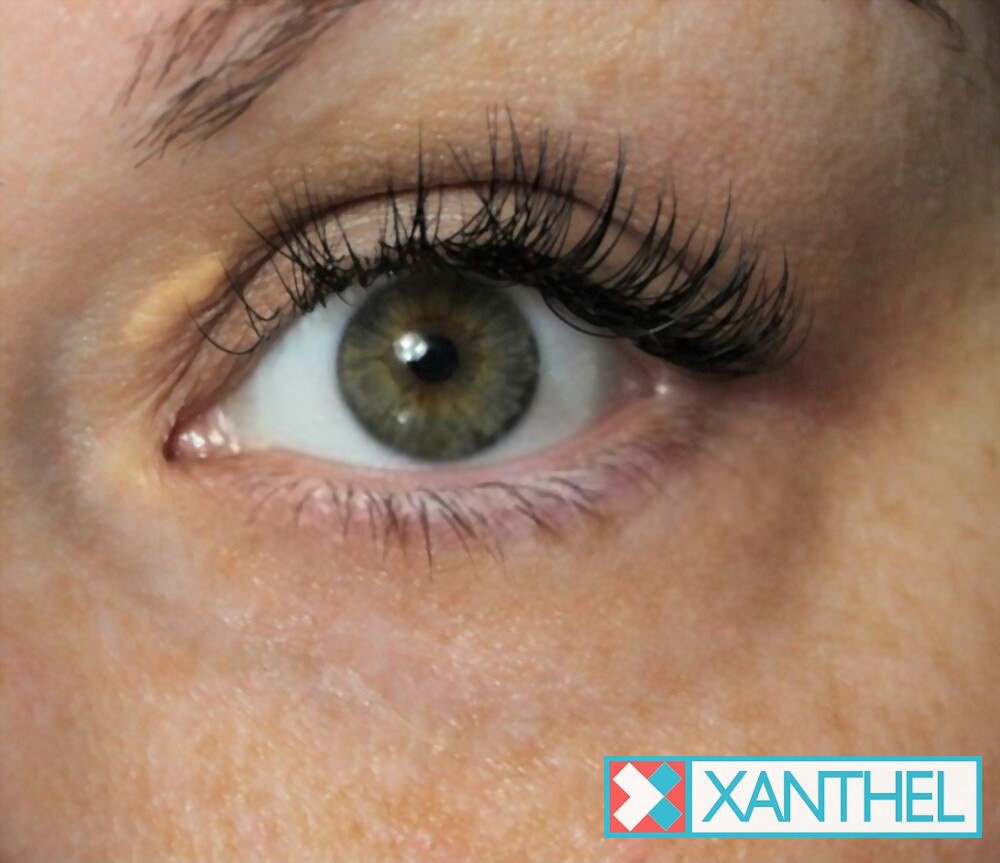Focus on Periorbital Xanthelasma – Deposits Surrounding the Eyes
Focus on Periorbital Xanthelasma – Deposits Surrounding the Eyes
It happens in a quiet, unguarded moment. You lean closer to the mirror, perhaps to tweeze an eyebrow or check your makeup, and you see it. A yellowish, slightly soft-looking spot on your eyelid. It isn’t a pimple, it doesn’t hurt, and it wasn’t there before. This is the subtle, unassuming arrival of periorbital xanthelasma, a condition whose clinical name sounds complex, but whose appearance raises very simple, direct questions: What is this, and what is it trying to tell me?
To have xanthelasma is to have a small, visible mark that carries a weight far greater than its size. It’s more than a cosmetic nuisance, it’s a potential signal, a story written on the most delicate area of your skin that speaks to a deeper biological process. Understanding this condition means looking beyond the reflection and exploring the intricate connection between our skin and our internal health.

What Exactly is Periorbital Xanthelasma? Decoding the Clinical Term
Let’s break down the name, because it tells you almost everything you need to know. “Peri-” is a prefix meaning “around” or “surrounding.” “Orbital” refers to the orbit, the bony socket of the eye. And “xanthelasma” comes from the Greek words “xanthos” for yellow and “elasma” for plate. Put it all together, and you have the clinical description: a yellow plate around the eye.
These plaques are soft, sometimes semi-solid deposits of lipids, which are fats, predominantly cholesterol. They collect just beneath the surface of the skin. They are not cancerous, not contagious, and not in themselves physically harmful. But to dismiss them as a simple skin tag or blemish would be to miss their profound significance. Think of periorbital xanthelasma not as the disease itself, but as a potential check engine light for your body’s metabolic system. It is a visible clue that something may be out of balance with how your body is processing and managing cholesterol.

The Root of the Issue: Why Do These Deposits Form Around the Eyes?
The appearance of xanthelasma is a story of excess. It’s fundamentally linked to a condition called dyslipidemia, a term for unhealthy levels of lipids in the blood. This typically means high levels of LDL cholesterol, often called “bad” cholesterol, or high levels of triglycerides, another type of fat. When there is too much of this fat circulating in the bloodstream, the body’s cleanup crew, a type of white blood cell called a macrophage, goes to work. These cells gobble up the excess cholesterol, but they can become so engorged that they transform into what are known as “foam cells.”
These lipid-laden foam cells are the building blocks of xanthelasma. They begin to accumulate in certain tissues, and the area around the eyes is prime real estate. The skin here is among the thinnest on the entire body. It’s incredibly delicate and rich with a dense network of tiny blood vessels and capillaries. This delicate geography makes it an easy place for foam cells to migrate out of the bloodstream and settle into the dermis, where they become visible as yellowish plaques. The silent accumulation of these cells is what eventually appears in the mirror. You can learn more about the complexities of high blood cholesterol from the National Heart, Lung, and Blood Institute.
The Two Sides of the Coin: Not Everyone with Xanthelasma Has High Cholesterol
Here is where the story becomes more nuanced and, for many, more confusing. While xanthelasma is strongly associated with high cholesterol, only about 50 percent of people with these eyelid plaques will actually have abnormal lipid levels on a blood test. This creates a puzzling question: if my cholesterol is normal, why do I have these cholesterol deposits on my skin?
The answer likely lies in a localized defect. In individuals with normal systemic cholesterol, the problem may not be the total amount of fat in their blood, but a localized issue with how the skin cells in the periorbital area process and transport lipids. Their bodies might have a reduced ability to clear cholesterol from that specific tissue, causing it to accumulate even with normal blood levels. This is why, regardless of your blood test results, the appearance of xanthelasma is always considered significant. The link between xanthelasma and both high and normal cholesterol levels is a subject of ongoing research, but its presence is always a flag for further investigation.

The Impact Beyond the Mirror: The Emotional and Psychological Weight
We cannot talk about periorbital xanthelasma without acknowledging its profound emotional impact. It resides on the most visible and expressive part of our bodies, the area people look at during every conversation. Unlike a blemish on the back or arm, it cannot be easily hidden.
This can lead to a significant burden of self-consciousness. People find themselves trying to conceal the plaques with makeup, which can be difficult and often feels inadequate. It can make you shy away from direct eye contact or feel that people are staring at the marks instead of listening to you. Beyond the cosmetic frustration, there is the layer of health anxiety. Every glance in the mirror can become a reminder that something might be amiss internally, a constant, low-grade source of worry about your heart health and long-term well-being.
The Essential Next Step: From Discovery to Diagnosis
If you have noticed these yellowish deposits around your eyes, the most important action you can take is to schedule an appointment with a doctor or a dermatologist. This is not a “wait and see” situation or an issue for self-diagnosis. A medical professional can provide a definitive diagnosis, often with just a visual examination.
More importantly, this visit will trigger the necessary next step: an investigation into your metabolic health. Your doctor will ask about your diet, lifestyle, and family medical history and will almost certainly order a lipid panel. This is a simple blood test that measures your total cholesterol, LDL, HDL (“good” cholesterol), and triglycerides. The results of this test are not just numbers, they are the key to understanding your personal health story and your risk for cardiovascular disease. Understanding what a lipid panel measures is an empowering step in taking control of your health.

Taking action based on your doctor’s findings is the cornerstone of managing your health for the future. This medical journey is vital. However, it’s a journey that often leaves the original cosmetic issue unresolved. Managing your cholesterol with diet, exercise, or medication is essential for preventing new plaques, but it rarely makes the existing ones disappear. This can be deeply frustrating. You are doing all the right work to protect your health, but the visible evidence remains. You deserve to see a reflection that matches the positive changes you are making internally.
This is the point where you can take control of the aesthetic aspect of your journey. For this specific cosmetic purpose, there is Xanthel ® Gel. It is designed to address the visual appearance of the plaques, helping you to visibly diminish them. Xanthel ® is a selectively formulated gel, created to target the cosmetic look of these yellowish cholesterol deposits. Many users find that the appearance of their plaques is significantly reduced with just a single, easy application performed in the comfort of their own home. It is expertly designed for cosmetic effectiveness across all skin tones, offering a direct and accessible path to refining your skin’s appearance. As you focus on your internal health with your doctor, let Xanthel ® help you align your outer confidence. With free worldwide delivery, it is the simple, logical next step in feeling and looking your very best.

Xanthel ® Cosmetic Gel
A focused cosmetic gel formulated specifically to improve the appearance of eyelids bearing xanthelasma plaques. Its composition is selectively designed for cosmetic impact across all skin tones, offering a straightforward, at-home option for managing the look of these blemishes.
A Singular Application
The power of Xanthel ® is in its simplicity. It is formulated for a single, one-time cosmetic application. This focused approach is designed to visibly diminish the appearance of xanthelasma plaques, removing the need for daily or repeat uses.
Legal: This product is for cosmetic use only. This product is not intended to diagnose, treat, cure, or prevent any medical condition. Consult a healthcare professional regarding any skin condition.